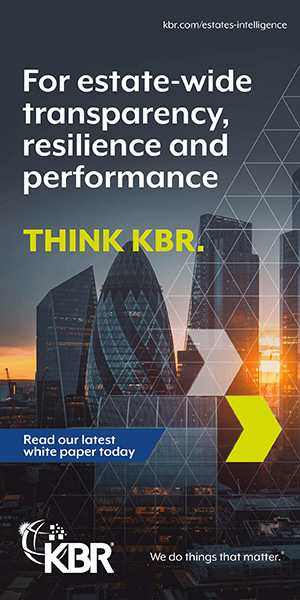THE CHANGING FACE OF THE IT LANDSCAPE
The business systems and IT landscapes organisations need to manage have significantly evolved over the last five years. The pandemic was understandably a huge driver of change, with most organisations having to quickly bolt on new capabilities to support remote working and keep day-to-day operations running. But those ‘temporary add-ons’, plus the many others implemented since, are now embedded in many organisations. The operating environment has changed too. Alongside increasing competition and globalisation, and continuous political and supply chain instability, we also have consumers’ heightened expectations for seamless and personalised digital experiences. The impact on IT? Teams are having to enable greater business flexibility than ever before, while simultaneously driving operational efficiencies and supporting sustainability agendas.
THE STATE OF IT INFRASTRUCTURE TODAY
IT is at the heart of every organisation. It not only supports the running of day-to-day operations, but also enables the projects and initiatives that deliver on every business strategy. However as digital transformation is accelerating, so is the complexity of the IT landscape. Pandemic-related technology investments have significantly contributed to this complexity; the range of technology and applications in use has increased along with a shift towards using more cloud services. This has made it much more difficult for IT leaders to have complete visibility into the performance of their IT infrastructure.
The global talent shortage is also an issue for IT teams, with many organisations lacking the necessary skills and expertise in-house. As skilled employees leave, it’s proving hard to replace them – leaving many IT departments unable to meet the needs of the business at the speed required.
77% of ITDMs say a lack of the necessary skills and resources in-house prevents them from meeting the needs of the business, at the speed it requires* Daisy research report 2023
Some organisations are choosing to combat this skills shortage by outsourcing all or part of their IT infrastructure management to a managed service provider. This approach gives organisations access to the specialist technology skills they need, at the point they need them.
75% fully (24%) or part (51%) outsource their organisation’s IT infrastructure management to a managed service provider*

CLOUD: A WINNING STRATEGY, BUT NOT YET FOR EVERYTHING
The business benefits of the cloud are clear: organisations making the move are seeing increased transaction and processing speeds, and improved agility and scalability. They’re also finding cloud to be a great future-proofing technology, ideally suited to emerging data – and power-intensive use cases, such as artificial intelligence (AI) and machine learning (ML), edge processing, and data analytics. So, it’s no surprise that cloud usage is continuing to increase in organisations of all sizes.
However, organisations are finding that their ability to harness the power of the cloud depends largely on their existing IT landscape. The biggest barrier to success is that the greater the complexity of the existing IT infrastructure, the greater the work to migrate it to the cloud. At the same time, data security concerns continue to pose a significant challenge for organisations interested in moving more of their IT estate to the cloud.
As a result, many organisations have ended up with a hybrid cloud environment by accident rather than design, with applications and services running across a variety of public cloud, private cloud, and on-premises platforms. In today’s hybrid cloud world, it is vital that an organisation’s infrastructure is secure and able to dynamically adjust to workload demands. But the multitude of different environments and tools in use make it hard for organisations already struggling to gain the end-to-end visibility needed for consistent security and reliability.

THE STRATEGIC IMPORTANCE OF SUSTAINABILITY
Today, sustainability is an important business differentiator. Customers are increasingly choosing sustainable and ecofriendly options, while more job seekers are looking to work for companies that share their social and environmental values. This focus on corporate and social responsibility is filtering through to IT teams, with many organisations now looking at the sustainability and energy efficiency of their IT operations. While IT teams in most organisations have been given IT sustainability targets, they aren’t at all confident that they can meet them. One of the biggest hurdles for IT teams is legacy and on-premises infrastructure, with a large number of teams defining legacy tech as ‘a sustainability nightmare’, as well as a massive contributor to overall IT power consumption. Organisations are increasingly benefitting from the sustainability features of their cloud providers, many of which run at very high efficiency levels and use sustainably sourced power. But this leaves organisations with legacy hardware that’s hard to migrate, unable to realise the full benefits of their cloud providers’ eco-credentials.
CREATING A FUTURE-PROOF HYBRID CLOUD PLATFORM
IT infrastructure remains a key part of delivering ongoing business success against a backdrop of constantly changing industry and business challenges. Most organisations are adopting cloud solutions in some form, and starting to gain the benefits of speed, flexibility, agility and consumption-based pricing. But many have found it difficult to move wholesale to the cloud, often because of an overly complex IT landscape and the burden of legacy infrastructure and applications that simply cannot be migrated.
Working with Daisy means access to a trusted HPE Gold Partner who can help you to simplify your IT operations. We can help you manage performance, cost, security and compliance across the hybrid, multi-cloud estate to reduce risk and accelerate the business. The goal is to help you deliver the business outcomes that you need, by delivering cloud services for your infrastructure, platforms and management as well as your most demanding workloads
More Information:
Research Report: Dealing with IT infrastructure Complexity in a Hybrid Cloud World >









